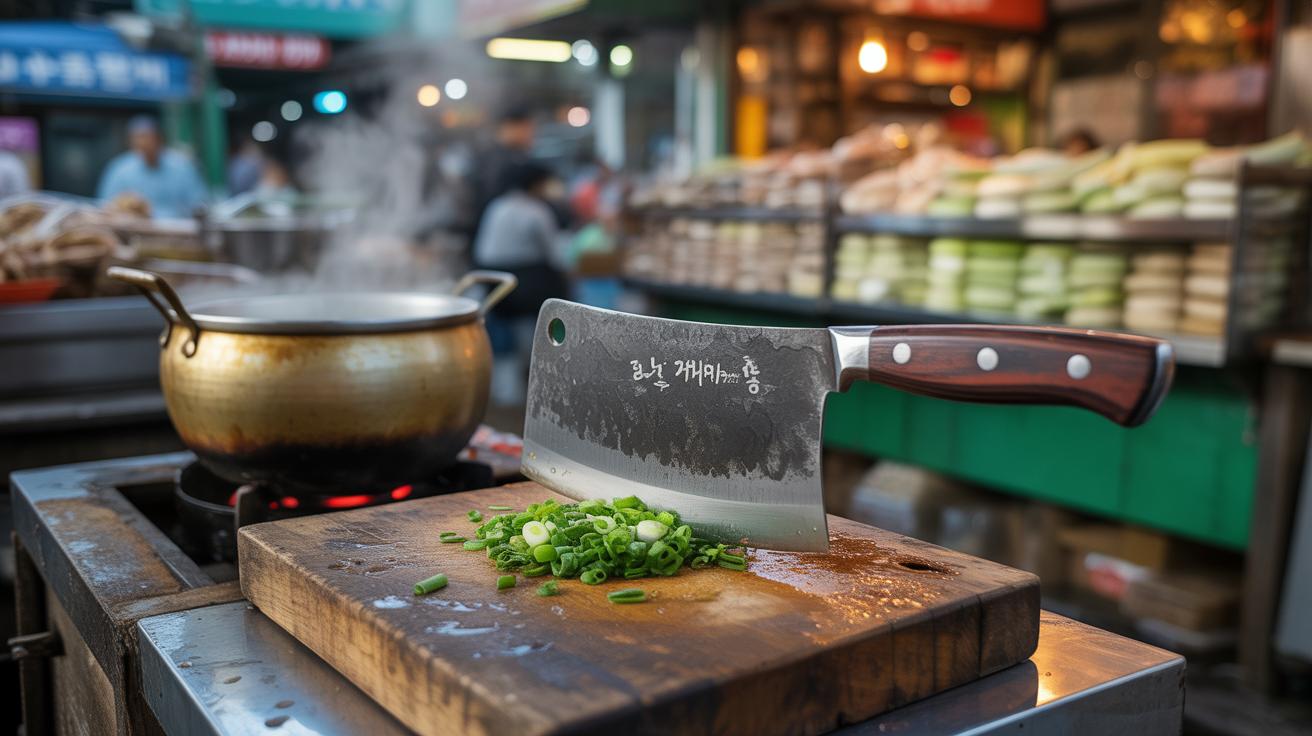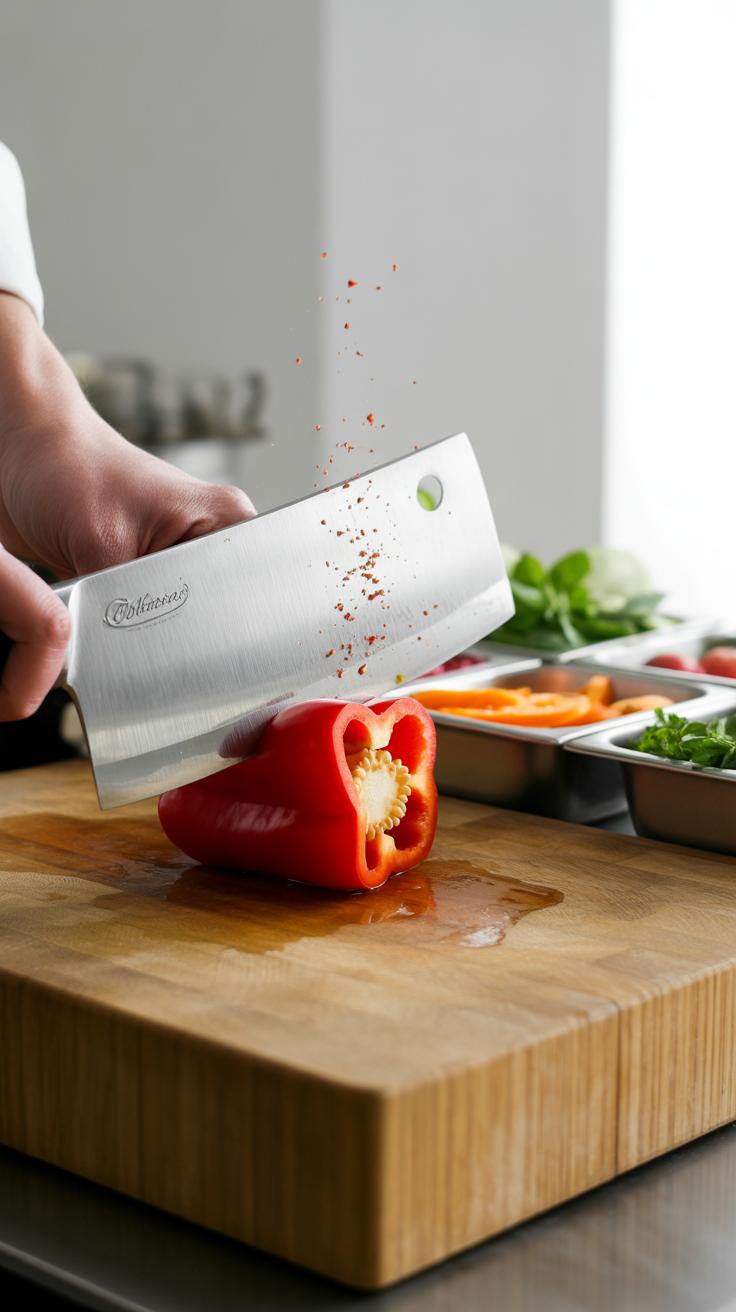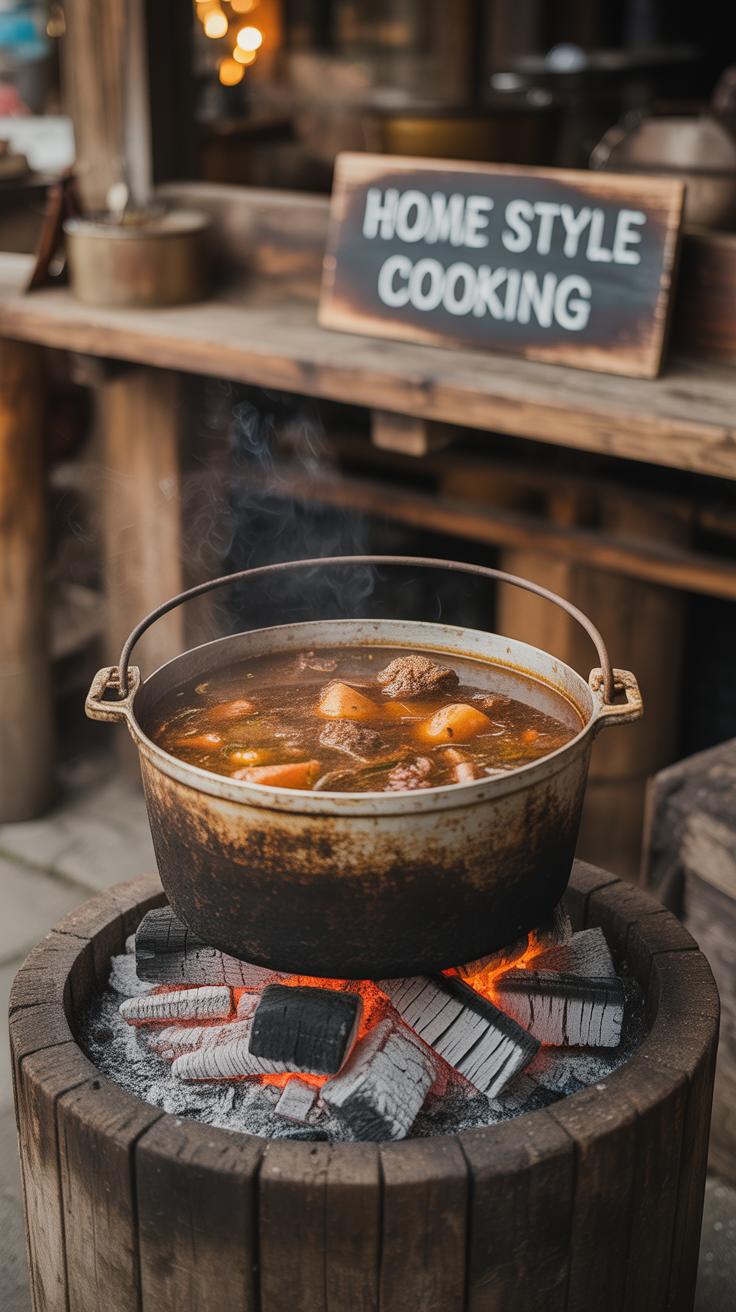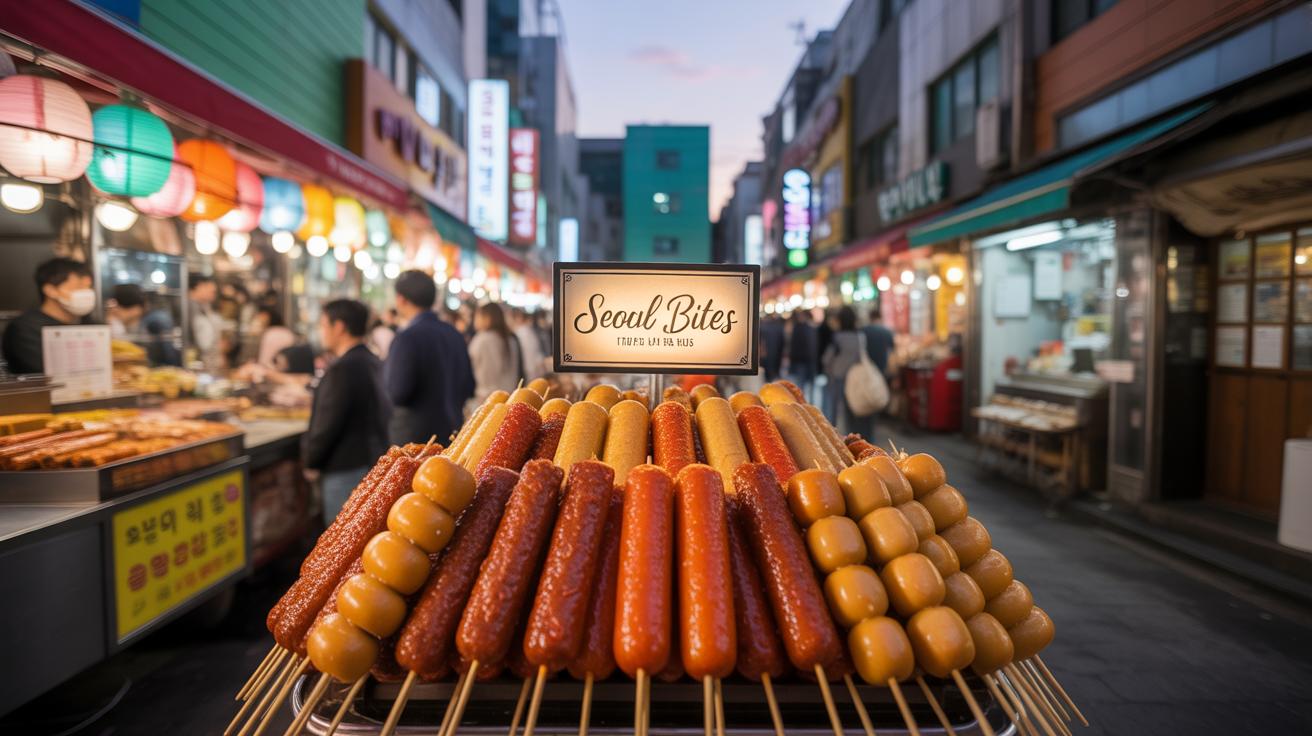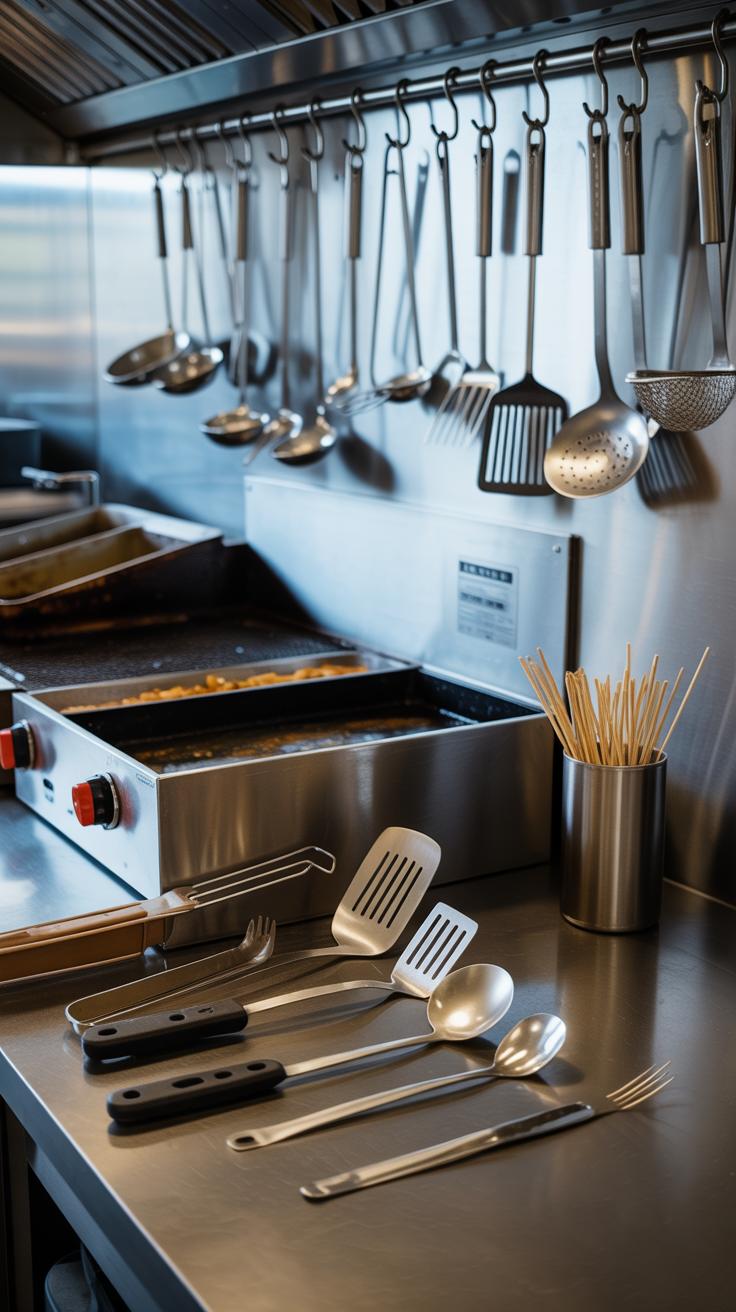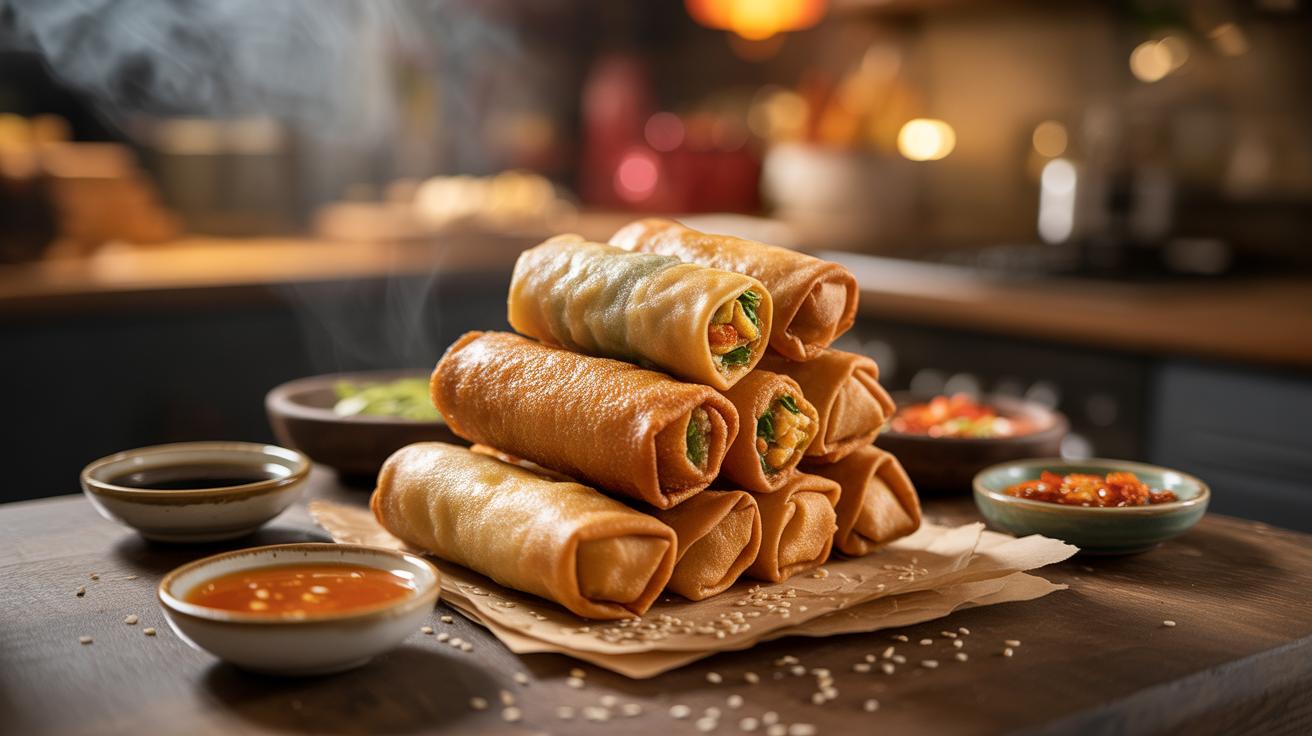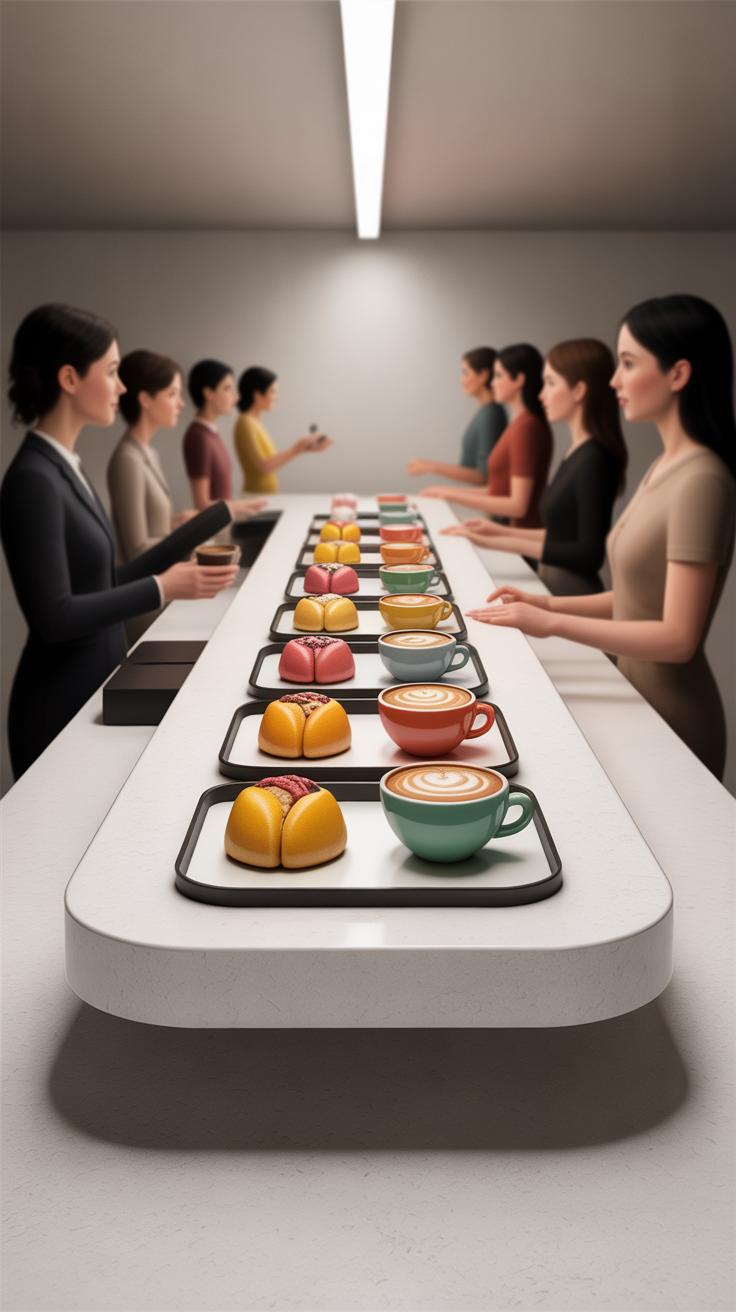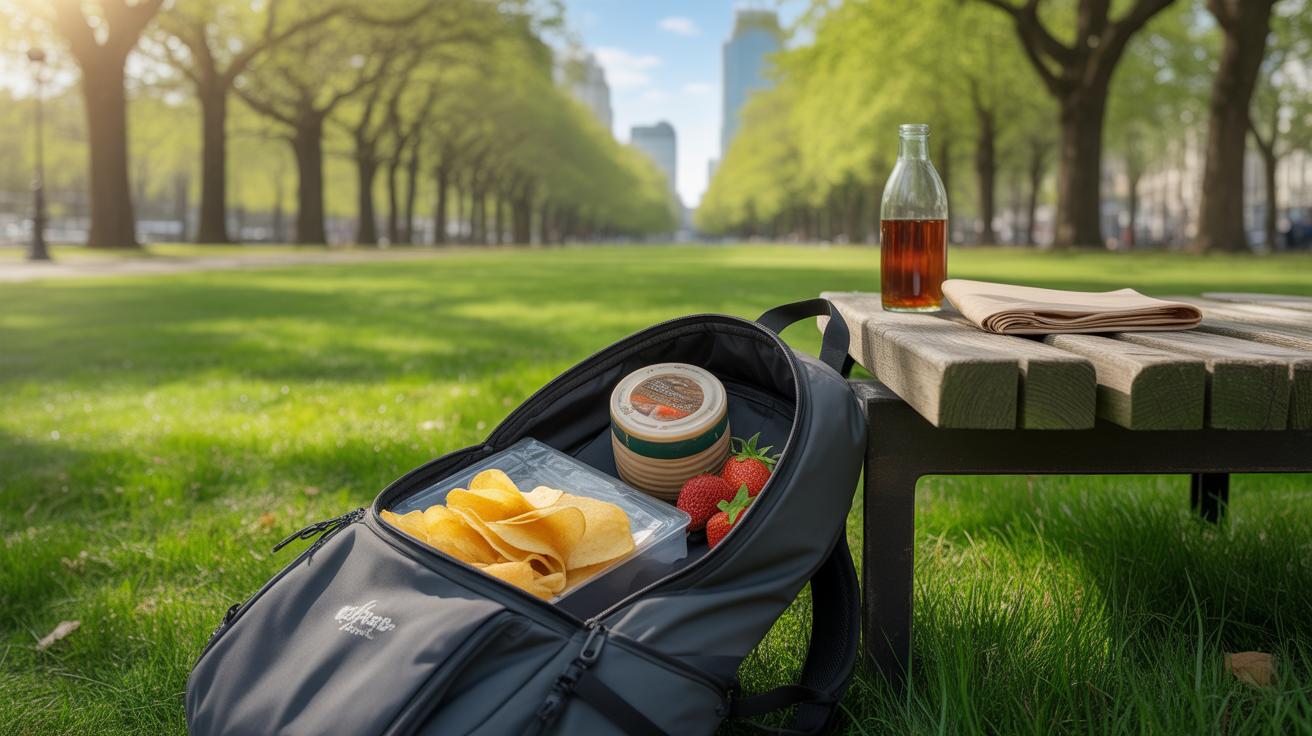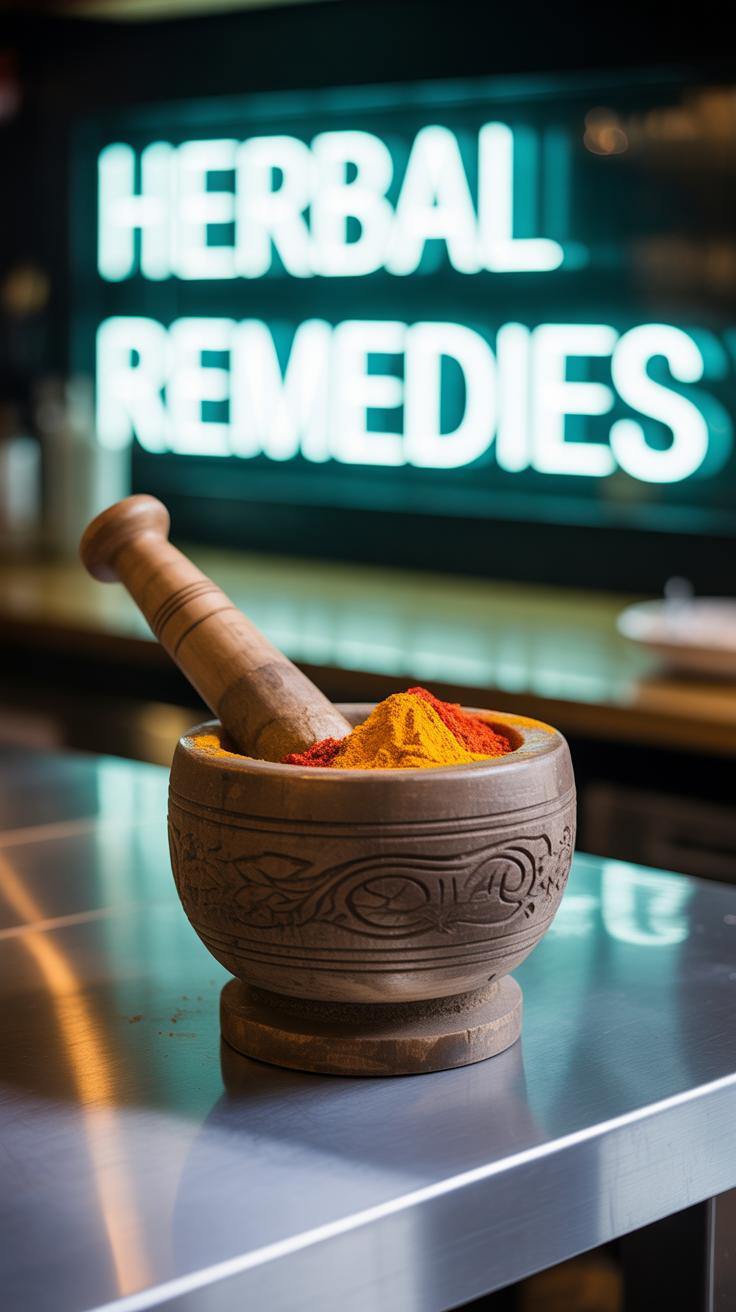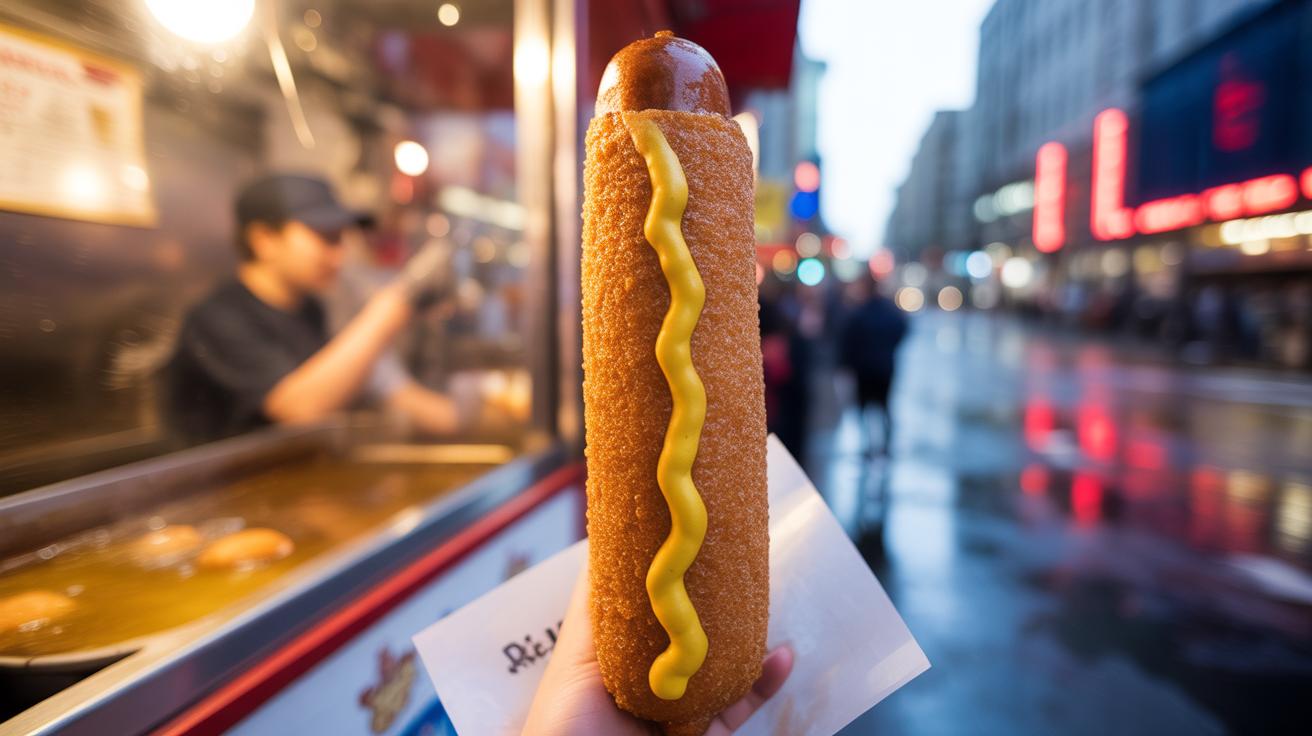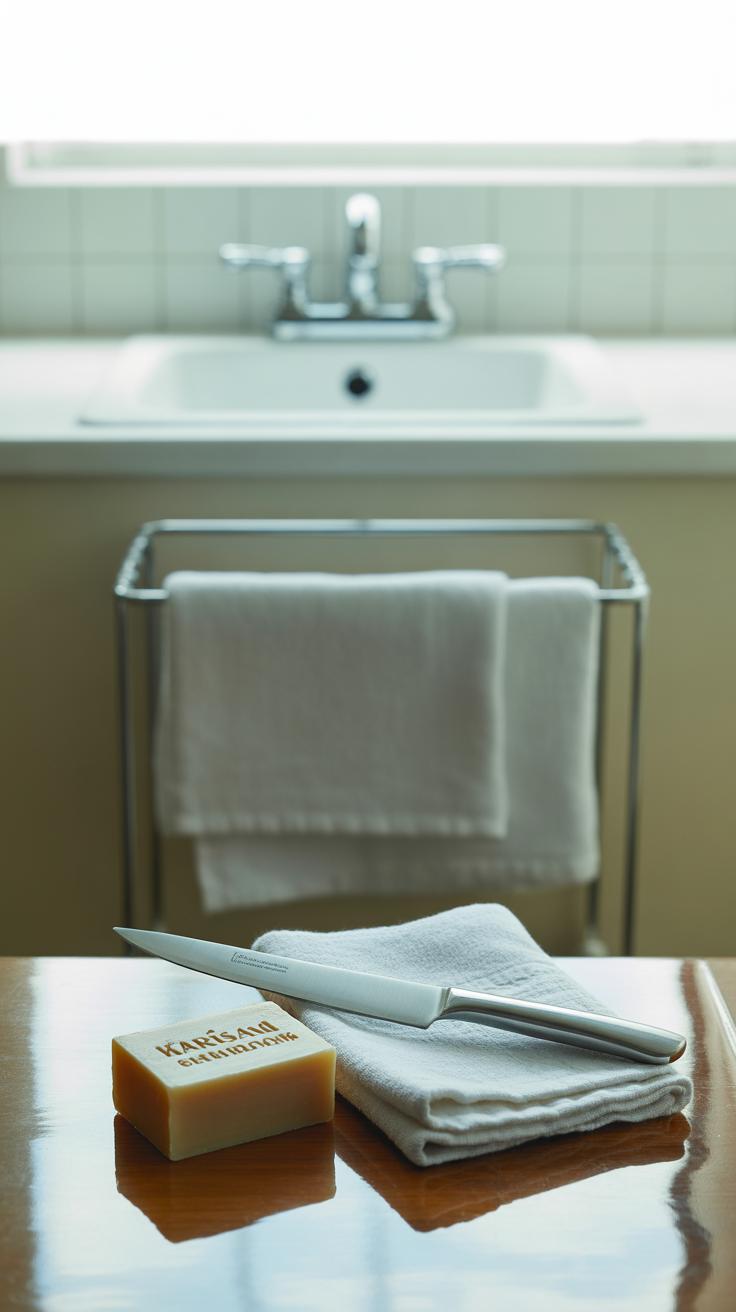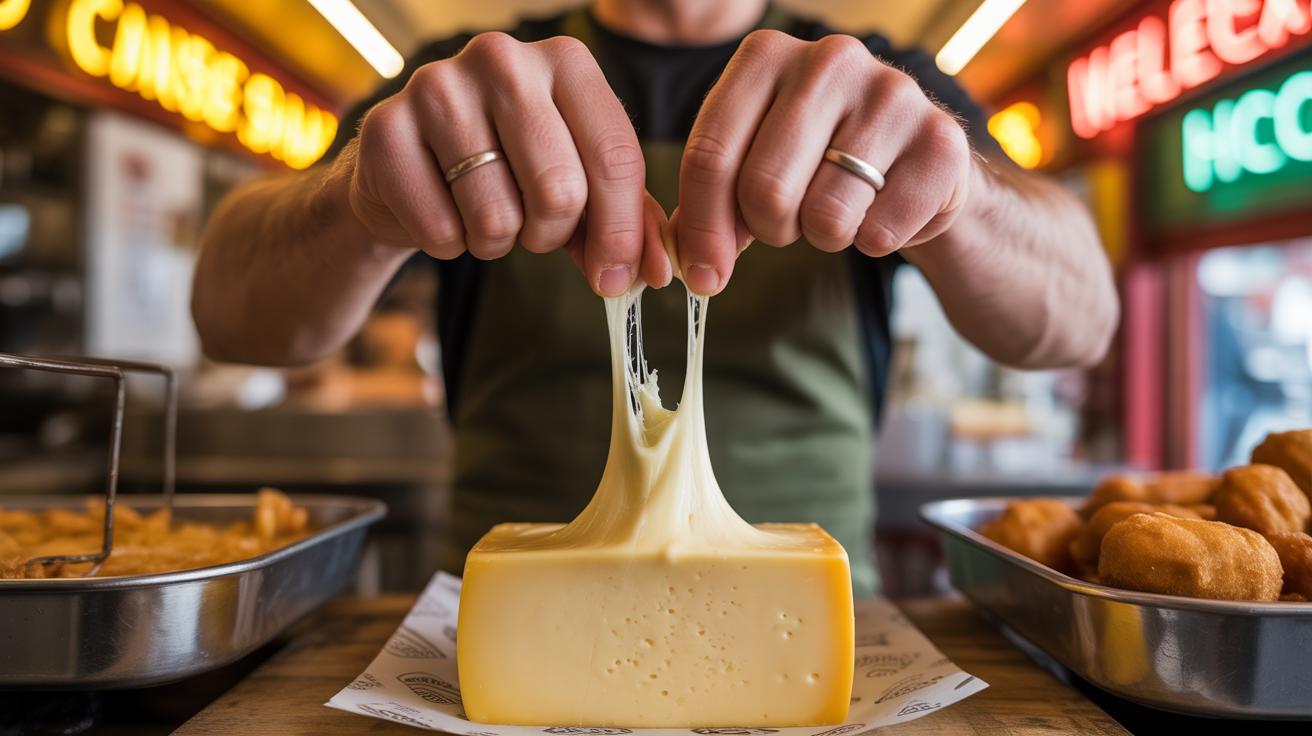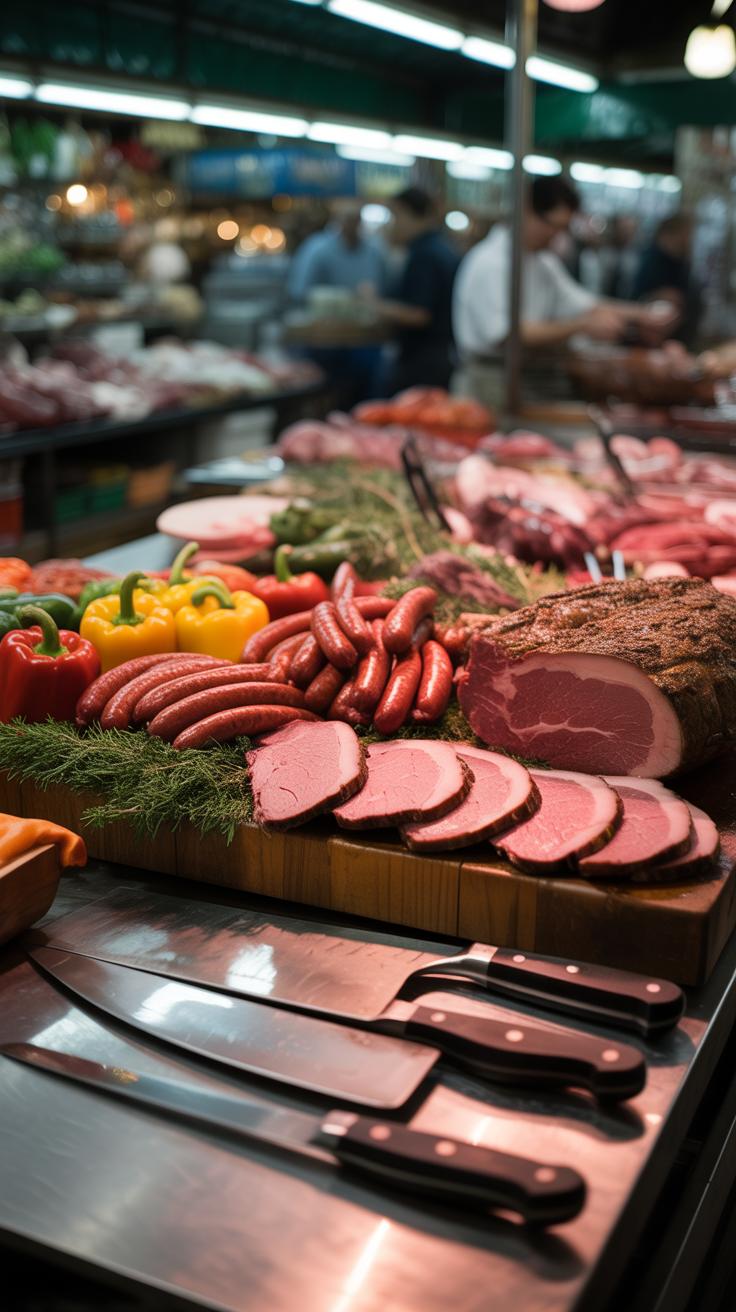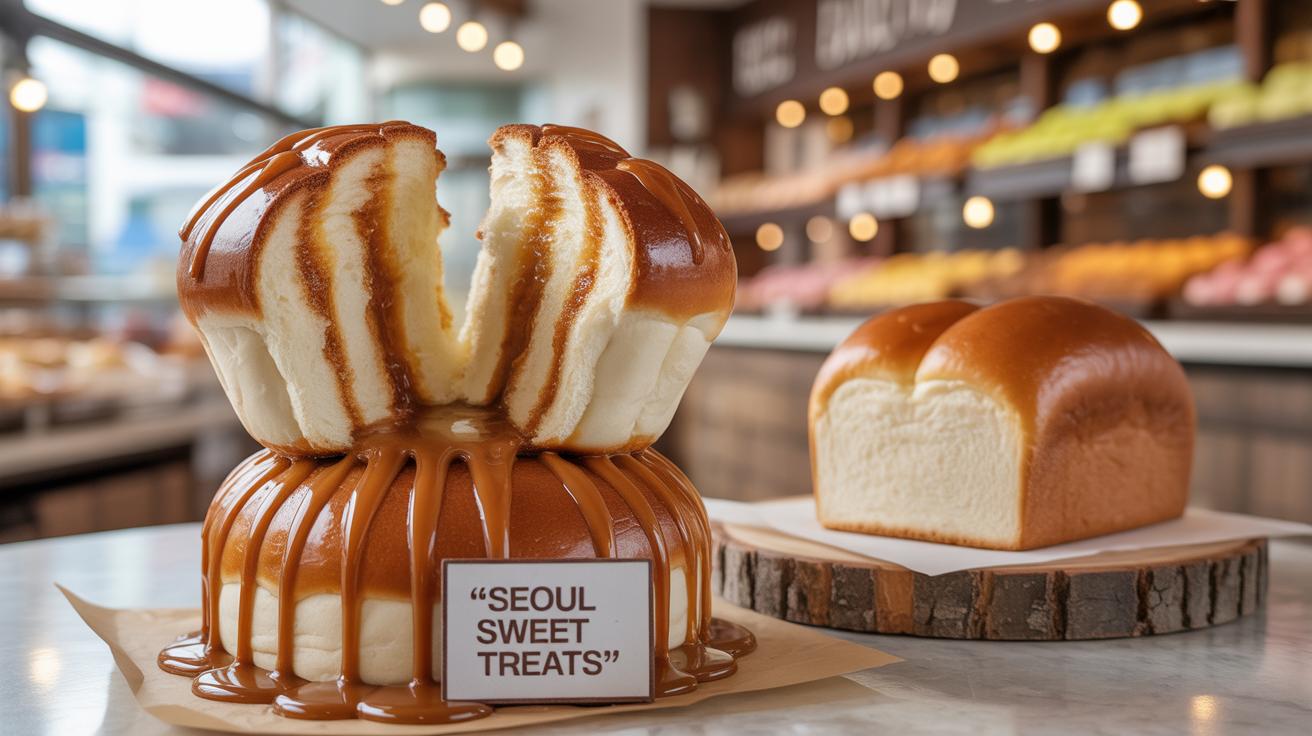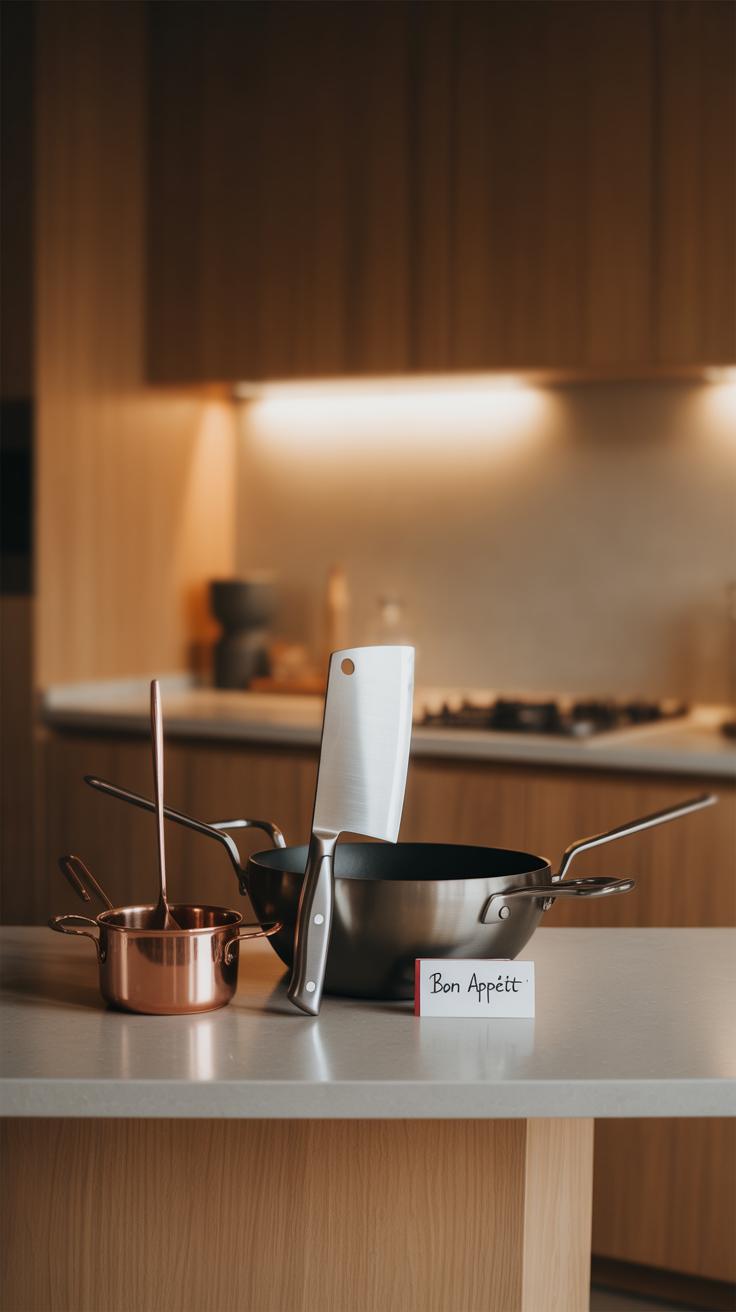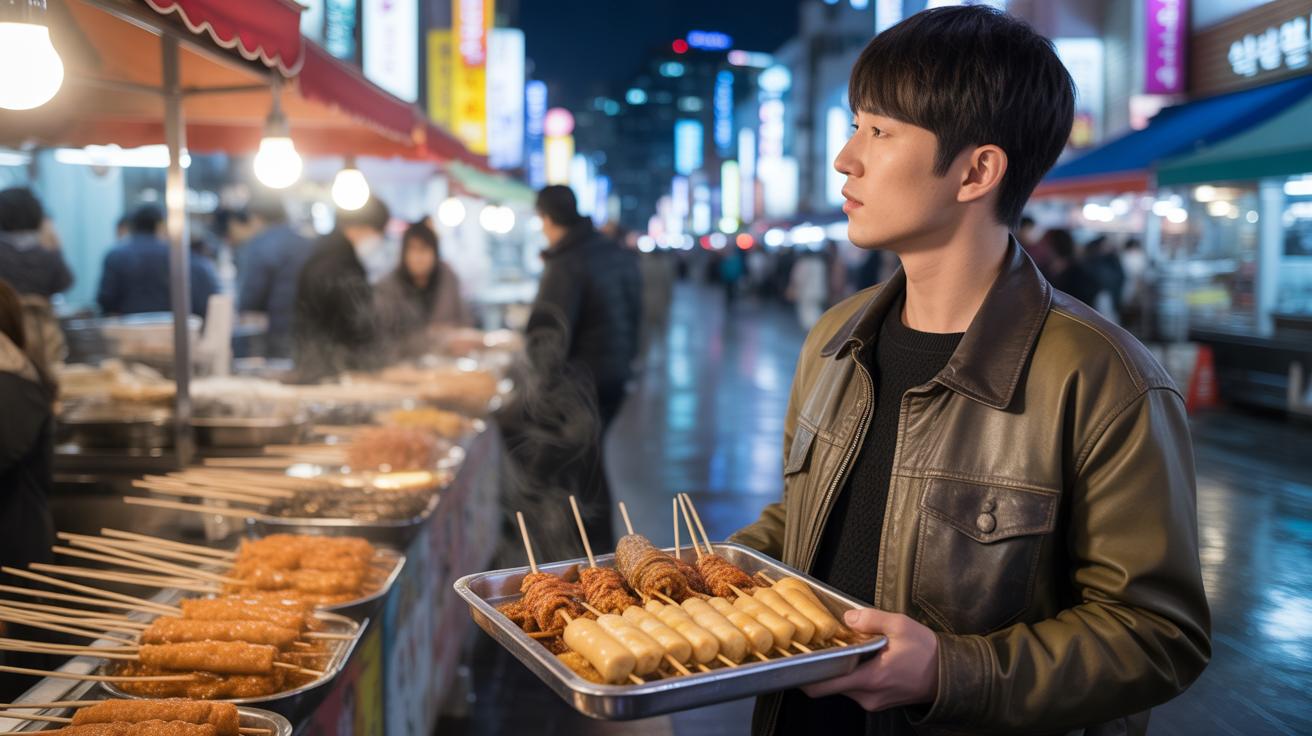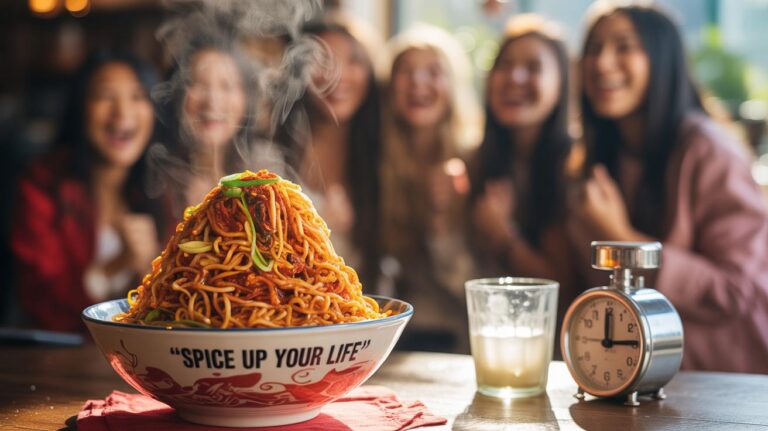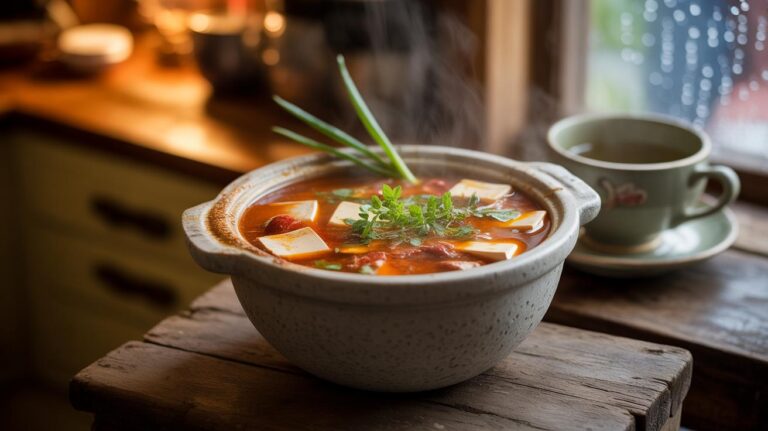Introduction
Korean street food is a vibrant part of the culture, filled with rich flavors and unique cooking methods. Behind every delicious dish is a set of tools that street vendors use to prepare food quickly and expertly. These tools are not only practical but have stood the test of time, making them essential in every Korean kitchen and street stall.
In this article, you will learn about the key Korean kitchen tools favored by street vendors. We will explore what makes these tools special and how they help prepare popular street foods. Whether you are a cooking enthusiast or curious about Korean cuisine, understanding these tools will give you insight into Korean food culture and its preparation.
The Cleavers Role in Korean Street Cooking
The Importance of the Cleaver in Korean Street Food Preparation
The Korean cleaver is more than just a tool; it’s a staple for street vendors slicing and dicing in busy food stalls. Its design balances strength and precision, letting cooks switch between heavy chopping and delicate cuts without switching knives. You might think a cleaver is clunky, but the Korean version strikes a curious middle ground, where durability meets control. It withstands pounding bones but still feels nimble when preparing softer ingredients. You can almost hear the rhythmic chop-chop that signals the cleaver at work, a sound that’s as much part of the street food experience as the smells and crowds.
Features of the Korean Cleaver
Take a closer look at a Korean cleaver and you’ll notice a broad, rectangular blade, somewhat thinner than the typical butcher cleaver. Its blade usually measures between 7 and 9 inches, wide enough for scooping ingredients aside after cutting. The thickness isn’t excessive; it’s just enough to give that satisfying heft, making it feel sturdy but not cumbersome. The edges come sharp and stay sharp—vendors sharpen them often to keep up with the slicing demands. Handles tend to be wooden or synthetic, designed for a secure grip despite the fast, repetitive chopping.
Common Uses by Street Vendors
Street vendors rely on the cleaver for nearly everything: chopping pork belly for tteokbokki, slicing rice cakes, or quickly dicing vegetables like cabbage and scallions. It’s like their go-to tool for speed without sacrificing precision. When you watch a vendor in action, it’s clear the cleaver makes it easier to prepare ingredients on the fly, with quick but controlled cuts. Sometimes, it’s even used to crack open bones or crush garlic. Its versatility saves time and effort – you don’t see many other tools getting that kind of daily wear on bustling street stalls.
Gamasot Pots for Flavorrich Cooking
Design and Material of Gamasot
The gamasot pot is a heavy, thick-walled cast iron or steel pot with a rounded bottom. Its shape isn’t random—it helps distribute heat slowly and evenly across the surface. This design is key to what Korean cooking often demands: long, gentle simmering that melts flavors together without burning. The material itself retains heat well. So even when the flame dims, the pot stays hot enough to keep cooking steadily.
You might notice the gamasot is bulkier than usual pots, which can make it tricky to handle. But that bulk also means food inside cooks deeper, achieving a richer taste. The lid, which fits tightly, helps trap steam and aromas, enhancing the dishes further. This pot feels like it’s built for patience—something street vendors seem to accept as part of their pace.
Preparing Street Food with Gamasot
Street vendors rely on the gamasot for many crowd-pleasers: stews like kimchi jjigae, thick soups, and even rice dishes like nurungji. They use it right on portable burners, sometimes over charcoal. The pot’s size allows them to cook enough to serve dozens, without constant refilling. There’s a slow build-up of flavor that fast cooking can’t match.
Sometimes I wonder if it’s the pot or the cooking style it forces that shapes these meals. Perhaps the gamasot demands a bit of attention, a slow stirring, a focused eye on the flame beneath. Vendors often say it “breathes” with the food inside, and watching a pot simmer away, you understand what they mean. It’s less about quick prep and more about coaxing out depth—something every bite shows.
Essential Utensils for Street Food Preparation
When you watch Korean street vendors at work, it’s clear that certain utensils do the heavy lifting beyond the well-known cleavers and pots. Tongs, spatulas, and ladles are some of the unsung heroes, each playing a distinct role that helps them manage their bustling stalls with speed and precision.
Tongs, Spatulas, and Ladles
Tongs are everywhere, gripping everything from grilled skewers to slippery rice cakes. They give vendors control without burning fingers and help flip or serve food with ease. Spatulas come in handy too—especially flat, wide ones that flip pancakes like hotteok or press down on seafood pancakes for even cooking. Ladles are crucial for scooping brothy dishes or ladling spicy sauce onto a dish just right.
These tools might seem simple but, without them, handling hot food quickly and cleanly would be a real challenge. Maybe you’ve noticed how vendors almost dance with these utensils, juggling several tasks at once. It’s not just about movement but getting the job done with little fuss.
Knives and Scissors
Knives and kitchen scissors are indispensable for sharp, efficient preparation. Vendors often rely on scissors rather than knives to cut tteokbokki rice cakes or noodles right in their pans—this speeds things up and keeps prep minimal. Knives, meanwhile, handle finer work like slicing vegetables or meats into bite-sized pieces.
You might think that scissors are too casual for the heat of a busy street stall, but they actually offer incredible control and speed. It’s interesting how something so simple becomes essential in a setting where every second counts.
How Vendors Organize Their Cooking Space
If you’ve ever stood near a Korean street food stall during a rush, you might notice how everything seems almost… choreographed. Vendors arrange their tools and ingredients so that nothing gets in the way. The goal? To keep motions tight, quick, and instinctive.
Usually, the workspace splits naturally into zones: prep, cooking, and plating—though these might be just inches apart. Tools lie where they’re needed most, often hanging right above the stove or resting within arm’s length on a small shelf or hook.
Consider the spatula, tongs, and ladle. These staples sit in their own holders just beside the grill or pan. So when flipping a tteokbokki or flipping fish cakes, a vendor barely has to pause. Same goes for bowls and plates, stacked neatly to one side, ready for quick serving.
Vendors rarely use bulky or fragile equipment. Instead, they depend on lightweight pans, portable gas burners, and foldable tables that can be packed away swiftly at the end of the day. Tools must survive the daily hustle—constant packing, moving, even accidental drops.
Durability often trumps style here. Stainless steel scoops, wooden spatulas with worn edges, and small cutting boards that have seen better days might not look pretty, but they work stubbornly, without complaint.
Have you ever wondered how vendors remember the exact spot of each item in the cramped workspace? It’s almost muscle memory built from hours of repetition. And that routine keeps the queue moving, even when things get chaotic.
Traditional vs Modern Tools in Korean Street Food
Classic tools made from traditional materials
Many Korean street vendors still cling to classic kitchen tools made from wood, metal, and stone. A wooden spatula or paddle, for example, offers a certain control when flipping or stirring hot ingredients on a griddle. Wood doesn’t conduct heat like metal does, so it keeps your hands cooler. Stone mortars and pestles, though heavier, give a texture to sauces and pastes that machines can’t quite match. Metal tools, especially cast iron pans or steel ladles, withstand high heat and are durable for constant, heavy use.
Using these materials can slow things down a little, but maybe that’s part of the charm. They absorb heat, hold it steadily, and often add minor but subtle flavor changes to the food. Of course, there’s some trade-off—wood can wear out or wrinkle with moisture, and stone is bulky and fragile when dropped. Yet, for many vendors, these goods feel more connected to the tradition of Korean street food than sleek alternatives.
Incorporation of new materials and designs
That said, many street cooks are also shifting toward modern tools made from stainless steel, silicone, and heat-resistant plastics. Stainless steel pans and utensils are lighter, easier to clean, and less prone to rust or warping. Silicone spatulas, flexible yet heat-resistant, make scraping and stirring quicker without scratching delicate surfaces.
Some vendors swear by these newer options to keep pace during busy hours. But it raises a question: does adopting such materials risk stripping away the authenticity of street food? Or maybe these tools just help vendors keep up with demand without compromising taste? Personally, I’ve noticed how stainless steel pans even out the heat better, so food cooks more evenly. Still, the tactile feedback from traditional tools is hard to forget. It’s a subtle difference, yet somehow meaningful in the kitchen’s rhythm.
The blend of old and new seems to dominate many stalls—a wood handle on a steel spatula, or a stone grill combined with silicone brushes. It’s not always clear which approach is “better,” but watching vendors weave between generations of gear feels a bit like witnessing tradition adapt, rather than disappear.
Cleaning and Maintaining Korean Kitchen Tools
Keeping kitchen tools clean isn’t just about appearances for street vendors—it’s a matter of food safety and health. When you’re handling high volumes of food in a small, busy space, any leftover grease or grime can quickly turn into a breeding ground for bacteria. So, cleaning isn’t optional; it’s essential, even if it sometimes feels tedious.
Daily cleaning routines
Every day, vendors wash their tools immediately after use. Think about the frying pans, spatulas, or tongs—they usually soak in hot water with a mild detergent. After that, scrubbing off stuck-on bits is key. Some also rub down wooden handles or sharpen knives to keep them usable and safe. Drying the tools thoroughly to avoid rust or mold is another step some might overlook, but it can make a big difference.
Long-term maintenance tips
Over time, wear and tear aren’t avoidable. Still, some care can stretch a tool’s usable life. Frequently oiling wooden utensils, tightening loose screws, or re-seasoning cast-iron pans helps a lot. Vendors might replace parts rather than the whole tool, which feels practical when funds are tight. Sometimes, they wait too long, though—leading to tools that don’t perform well and compromise the cooking process. Do you think regular maintenance is easy when you’re constantly on the move? Probably not, but it’s a small effort that pays off, both in safety and quality.
The Impact of Tools on Korean Street Food Quality
The kitchen tools street vendors choose play a more significant role than you might expect. They don’t just shape the cooking process—they influence the final taste and texture of the food served. When a vendor picks a particular griddle or pan, it can affect how evenly heat spreads, which directly impacts the dish’s flavor profile.
Some tools actually preserve the authentic taste of Korean dishes better than others. For example:
- Cast iron skillets hold heat evenly and help sear ingredients quickly, locking in juices and flavor.
- Stone bowls, known as dolsot, keep bibimbap warm for longer, allowing ingredients to release their aroma gradually.
- Traditional wooden spatulas prevent scratching and avoid adding metallic tastes that could alter subtle flavors.
On the other hand, speed matters, too. Street vendors juggle crowds and tight schedules without sacrificing taste. Here’s where well-chosen tools make a difference:
- Non-stick pans let cooks flip food repeatedly without sticking, ensuring freshness and fast service.
- Compact gas burners heat up quickly, so dishes get to you hot without waiting forever.
- Multi-purpose grills let vendors cook several items simultaneously without mixing flavors or textures poorly.
But there’s a trade-off sometimes—tools that speed things up might risk subtle flavor changes or textural compromises. Vendors often balance that carefully. Think about it: is it better to have your tteokbokki faster but a bit less smoky? Many choose freshness over perfection, and that’s part of what makes street food so alive and inviting.
Choosing Your Kitchen Tools Inspired by Korean Street Vendors
If you’re ready to try making Korean street food at home, picking the right tools can really make a difference. You don’t need a huge collection—but some basics do help. I think anyone starting out should have these essentials on hand:
- A good nonstick pan or griddle – many street dishes like jeon or tteokbokki call for quick frying or stir-frying.
- Long metal chopsticks – not just for eating, but flipping and moving food on grill plates or pans.
- A sturdy spatula or flat turner – for flipping savory pancakes and easing off sticky foods.
- A large mixing bowl – for marinating meats or mixing batter.
- A clean cloth or paper towels – vendors use these constantly to keep their workspace tidy, and you’ll want that too.
Where can you actually get authentic tools? Honestly, the best bet is Korean markets if you have one nearby. They often carry proper chopsticks, specialized pans, and even grill plates that you won’t find in typical stores. If not, online shops specializing in Korean cookware can be surprisingly reliable. A small word of caution: some places sell cheaper knockoffs that feel off to use—so maybe check reviews or ask someone familiar before you buy.
Sometimes, I’ve found that using something similar, even if not “authentic,” can still work—so experiment a bit. The key is to feel comfortable handling the tools because that’s where you get the rhythm right, almost like the street vendors themselves.
Conclusions
Understanding Korean kitchen tools gives you a new appreciation for the care and skill behind Korean street food. These tools are chosen for their specific functions and durability, making street cooking efficient and flavorful. The cleaver chops through tough ingredients, the gamasot pots cook flavors deeply, and other utensils keep the workflow smooth and neat.
By learning about these tools, you can see how tradition and practicality merge in Korean street food. If you want to try making Korean dishes at home or explore street food further, these tools offer a strong foundation. Your cooking can improve with the right equipment, just like the street vendors rely on theirs every day.

